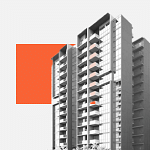Australia’s NAB CEO says housing is greatest societal challenge as bank books A$7.09 billion profit
NAB and the rest of Australia’s ‘Big Four’ banks rely heavily on the strength of the housing market
[SYDNEY] National Australia Bank (NAB) chief executive Andrew Irvine said Australia needs to speed up its decision making to drive economic growth and fast-track increasing housing supply, which is the country’s “biggest societal and policy challenge”.
NAB, Australia’s third largest bank by market capitalisation, on Thursday (Nov 6) reported a A$7.09 billion (S$6 billion) cash profit for the year ended Sep 30, compared with A$7.10 billion last year and a Visible Alpha consensus estimate of A$7.17 billion.
NAB and the rest of Australia’s “Big Four” banks hold huge mortgage books and therefore rely heavily on the strength of the housing market.
Australian home prices jumped by the most in more than two years in October as rate cuts and government policies fuelled buyer demand.
The Reserve Bank (RBA) kept the official cash rate on hold this week at 3.6 per cent and economists now don’t expect a rate cut until May next year.
“Housing is Australia’s biggest societal and policy challenge,” Irvine told a call with reporters.
A NEWSLETTER FOR YOU

Tuesday, 12 pm
Property Insights
Get an exclusive analysis of real estate and property news in Singapore and beyond.
“The economy is growing and it’s frankly growing at about full capacity without being able to generate too much inflation.
“You’re seeing house prices increasing and the RBA felt there was not a need to provide further stimulus to the economy because we’re seeing inflation proving to be persistent and sticky.”
Australia is falling far short of its goal of building 1.2 million homes by 2029. The supply of new housing is near its lowest in a decade, the National Housing Supply and Affordability Council said in a report this year, despite moves by some state governments to clear the way for more higher-density development around transport hubs and commercial centres.
“What we need to do now is really driving productivity, more reliable energy, more dwellings, less rules, quicker decisions of what this country needs to grow faster without generating inflation,” Irvine said.
Building approvals rose 15.3 per cent in September, according to official data, but worker shortages and high costs is expected to keep supply constrained in the near future.
NAB’s credit impairment charge climbed 14.4 per cent, primarily due to higher individually assessed charges within its business lending portfolio.
Operating expenses for the year rose 4.6 per cent to A$9.85 billion, mainly due to higher personnel and technology-related costs. The rise includes A$130 million related to payroll review and remediation charges after the lender discovered it had underpaid some of its staff.
Offsetting the impact of higher expenses and charges, NAB’s Australian business lending balances rose 9 per cent and deposit balances for the year grew 7 per cent.
Business banking is NAB’s largest division but increased competition from Commonwealth Bank and Westpac in the past year has threatened the bank’s market share and margins.
“Everyone wants what we have, we can defend and extend our position and not give away margins at the same time,” Irvine said.
NAB’s business and private banking division, which makes up almost half of its profit, reported a 1.6 per cent rise in cash earnings to A$3.33 billion for the year.
Net interest margin, the spread between interest earned from loans and paid to depositors, rose three basis points to 1.74 per cent.
However, excluding the benefits from markets and treasury division and lower liquid assets, the margin declined by one basis point, reflecting higher deposit cost and mix and higher wholesale funding costs.
NAB declared a final dividend of 85 Australian cents per share and a full year dividend of US$A1.70, up slightly on last year.
NAB shares were down 1.5 per cent in early trading, while the S&P/ASX200 was about 0.5 per cent higher. REUTERS
Share with us your feedback on BT's products and services




